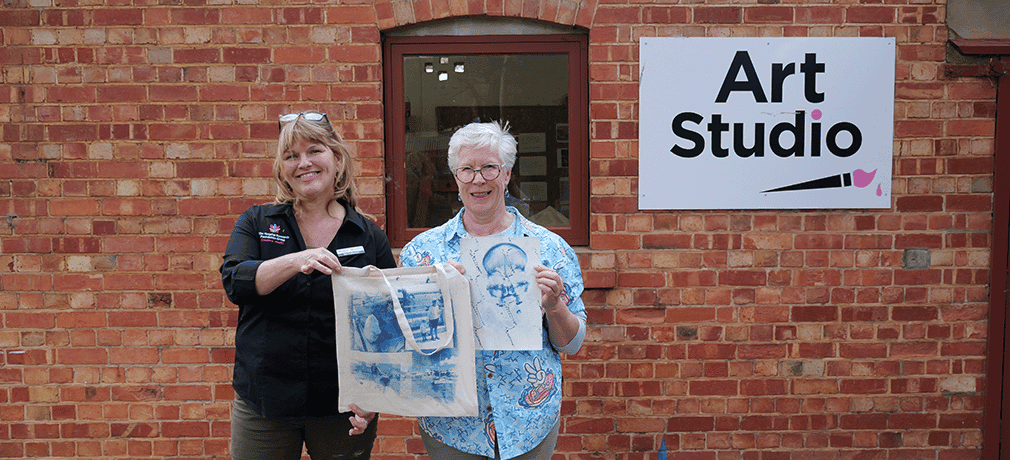
For over a decade, Babcock Australasia (Babcock) has supported the mental health and wellbeing of Australia’s veterans and emergency responders through its partnership with Military and Emergency Services Health Australia (MESHA). Through sponsorship of its Emergency Services Art Program, Babcock helps create a space where those who’ve dedicated their lives to protecting others can heal, reconnect, and rediscover their strength through artistic expression.
Mary Hemingway hadn’t aspired to join the military, but when recruiters came to her hometown in country Victoria to talk to her and her sisters about joining the Air Force, she leapt at the chance for a new opportunity.
“I joined the Navy, my sister Monica joined the Air Force, and my sister Marita joined the Army.”
The women were trailblazers, joining at a time of significant change for Defence as it began to open its ranks to women across the nation.
“When I got to HMAS Creswell there were eight girls and 20 boys on our course. I found out decades later they were only choosing two girls from the four biggest states were selected and offered a position to train as Supplementary List Officer Cadets,” Mary recalls, “so, I was like, ‘well that was pretty impressive, to be one of the top two in the state’,” she said.
“I was among the first group of women to go to sea; however, it took quite a number of years after that for women to go to sea regularly. Part of that was getting the ships ready and also getting enough women.”
Mary would go on to serve for another five and a half years and a further 20 years as a reservist. It was during this time she had a chance encounter that would plant the seed of her next career move.
“I’d always been involved in different volunteer organisations,” She said, “Around the same time, I’d taken part in NSW bike rides and on one of my first rides, I injured my knees and was treated by the St John Ambulance people and I thought, ‘they do a really good job’.”
Years later Mary and her family moved to Karratha, in outback Western Australia, which was so remote at the time it didn’t have a paid ambulance service. Having seen their good work firsthand, Mary took up the opportunity to join the local St John Ambulance Australia service and became its chairperson.
“So, when I came to Adelaide in 1999, I went to university to become a paramedic. I took five years to get the degree as I was studying part-time, looking after three school age kids as a fly-in-fly-out spouse and building a house. Despite these challenges, I duxed the course.”
Mary went on to serve for 13 years as a first responder. However, years of service to others whilst juggling her own commitments began to take its toll. She sought support through her veteran’s network and was introduced to an art program delivered by MESHA through friends in her veterans’ choir.
Part of The Hospital Research Foundation Group, MESHA supports military and emergency service communities by providing research, programs, and training to enhance the mental health and wellbeing of current and former members and their families.
Its art programs offer participants an opportunity to explore the healing potential of creative expression while developing new skills and techniques. For over a decade, Babcock Australasia has championed MESHA’s mission and provides support to Veterans via its sponsorship of the Emergency Services Art Program.
For Mary, it’s about more than just art. It’s about the welcoming community that forms around it.
“It’s about telling my story. It’s an opportunity to step outside of your head for a while, to take a break from the voices inside your head and your daily stresses, problems and so on. It’s a place where you can create, experiment, have fun, make artworks and work towards exhibitions. It’s a very supportive environment among people with similar lived experience with a trained trauma-informed tutor,” Mary says.
“I see it as an actual tangible way that companies like Babcock can support veterans and emergency responders and at the same time, they’re sending the message that; we see you, thank you for your service, we appreciate your sacrifice, and we understand the costs of your service. It’s a way of saying thank you for your service by supporting the programs that support veterans.”
